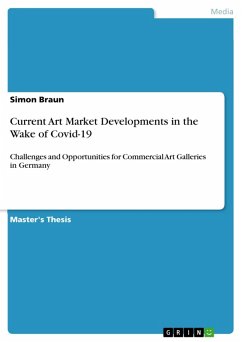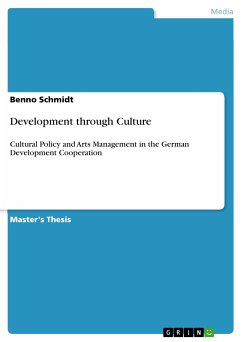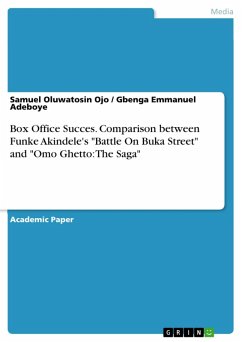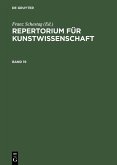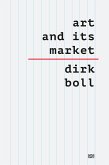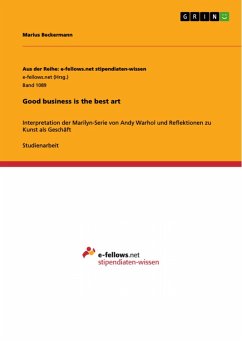Master's Thesis from the year 2021 in the subject Art - Arts Management, grade: 1,7, University College Dublin (School of Art History & Cultural Policy), course: Cultural Policy & Arts Management, language: English, abstract: This study identifies and analyses challenges and opportunities of commercial art galleries in the German-speaking market following the Covid-19 pandemic. The sector has already been a challenging playing-field with a growing market division between big and small players, many of whom were financially dependent on art fair participations. Through Covid, many operations had to be shifted online, and the traditional reliance on personal meetings and relationships needed to be mitigated. This thesis defines main changes to galleries' business models and assesses the impact of Covid. Objectives further include evaluating business opportunities and trends such as regionality or sustainability. The aim is to bring clarity to the most recent developments from an academic perspective while also offering practical applicability for arts managers, specifically gallerists and art market consultants. This thesis contributes to the literature by filling a currently existing gap through assessing the impact of Covid on galleries and by presenting an analysis from a managerial perspective. To achieve the objectives, a combination of methods is used, synthesizing academic literature, quantitative market reports and qualitative interviews with sample gallerists. Overall, the falling away of physical contacts has proven to be the core challenge for a sector heavily relying on personal relationships. Covid's impact varied across gallery types (small, mid-size and large), depending on their cost management and on how reliant each type had been on fair participation. The general shift online offered more opportunities for smaller galleries and/or the lower-price range; crucial factors are branding, conversion and targeting newer, younger audiences. Generally, however, online sales offerings underperformed and the overall role of digitisation for galleries is overrated. With younger collectors being more accustomed to buying online, a certain generational shift is however likely to happen. In the near future, the combination between interpersonal trust and trust instilled through online branding will be a decisive factor for winning newer collectors. Trends such as regionality or sustainability are unlikely to play a stronger part in the gallery sector.
Dieser Download kann aus rechtlichen Gründen nur mit Rechnungsadresse in A, B, BG, CY, CZ, D, DK, EW, E, FIN, F, GR, HR, H, IRL, I, LT, L, LR, M, NL, PL, P, R, S, SLO, SK ausgeliefert werden.

